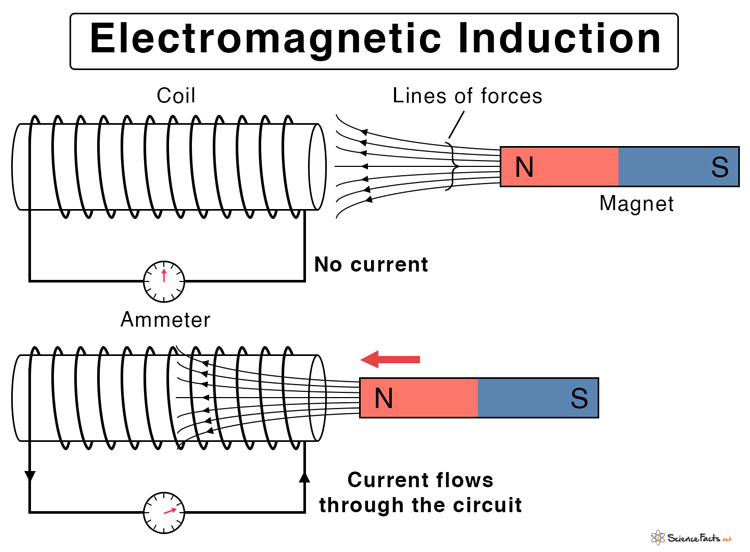Electromagnetic Induction
- Get link
- Other Apps
Electromagnetic Induction: Unleashing the Power of Magnetic Fields
Introduction:
Electromagnetic induction is a fascinating phenomenon that lies at the heart of many technological innovations and everyday devices. Discovered by Michael Faraday in the early 19th century, electromagnetic induction revolutionized our understanding of electricity and magnetism. In this article, we will delve into the concept of electromagnetic induction, explore its principles, applications, and the profound impact it has had on various fields of science and technology.
Understanding Electromagnetic Induction:
Electromagnetic induction is the process of generating an electric current or voltage in a conductor when it is exposed to a changing magnetic field. It is based on the fundamental relationship between magnetism and electricity, as described by Faraday's law of electromagnetic induction and Lenz's law.
Principles of Electromagnetic Induction:
To comprehend electromagnetic induction better, let's explore its key principles:
1. Faraday's Law: Faraday's law states that the electromotive force (EMF) induced in a circuit is directly proportional to the rate of change of magnetic flux through the circuit. Magnetic flux is a measure of the total magnetic field passing through a given area. Therefore, when the magnetic field strength or the area changes, an EMF is induced, which can lead to the flow of an electric current.
2. Lenz's Law: Lenz's law states that the direction of the induced current in a circuit opposes the change in magnetic field that caused it. This law ensures the conservation of energy and plays a crucial role in determining the direction of the induced current. The induced current generates a magnetic field that opposes the original change in the magnetic field.
3. Mutual Induction: Mutual induction occurs when the change in current in one circuit induces an EMF in an adjacent circuit. This phenomenon is the basis for the operation of transformers and plays a vital role in power distribution and electrical transmission.
Applications of Electromagnetic Induction:
Electromagnetic induction has numerous applications across various scientific and technological domains. Here are a few notable examples:
1. Generators and Alternators: Electromagnetic induction is the underlying principle behind electric generators and alternators. These devices convert mechanical energy into electrical energy by rotating a coil of wire within a magnetic field. As the coil cuts through the magnetic field, an EMF is induced, resulting in the generation of electricity.
2. Transformers: Transformers rely on electromagnetic induction to transfer electrical energy efficiently between different voltage levels. By utilizing mutual induction between primary and secondary coils, transformers step up or step down the voltage in power distribution networks, enabling the efficient transmission of electricity over long distances.
3. Induction Heating: Induction heating utilizes electromagnetic induction to heat electrically conductive materials. An alternating current is passed through a coil, generating an alternating magnetic field. When a conductive material is placed within this field, eddy currents are induced, leading to its heating. Induction heating is used in various applications, such as metal forging, induction cooking, and industrial processes.
4. Wireless Power Transfer: Electromagnetic induction has facilitated the development of wireless power transfer technologies. By utilizing resonant coupling or magnetic induction coupling, power can be transferred wirelessly from a transmitter to a receiver, eliminating the need for physical connections. This technology is utilized in wireless charging pads for smartphones, electric vehicles, and other electronic devices.
5. Magnetic Sensors and Inductive Proximity Sensors: Electromagnetic induction is utilized in magnetic sensors and inductive proximity sensors to detect and measure magnetic fields or the presence of metallic objects. These sensors find applications in diverse fields, including industrial automation, robotics, and automotive systems.
6. Magnetic Levitation: Electromagnetic induction plays a significant role in magnetic levitation systems, where magnetic fields are used to levitate and propel objects, such as high-speed trains (maglev trains) and magnetic levitation transportation systems.
Conclusion:
Electromagnetic induction has transformed our world by providing a deeper understanding of the relationship between electricity and magnetism. This phenomenon has led to groundbreaking inventions and technologies that have revolutionized industries ranging from power generation and distribution to electronics, transportation, and automation. The principles of electromagnetic induction continue to drive innovation and pave the way for advancements in renewable energy, wireless communication, transportation, and other areas. By harnessing the power of electromagnetic induction, we have unlocked new possibilities and continue to explore the vast potential of this fascinating phenomenon.
- Get link
- Other Apps

Comments
Post a Comment